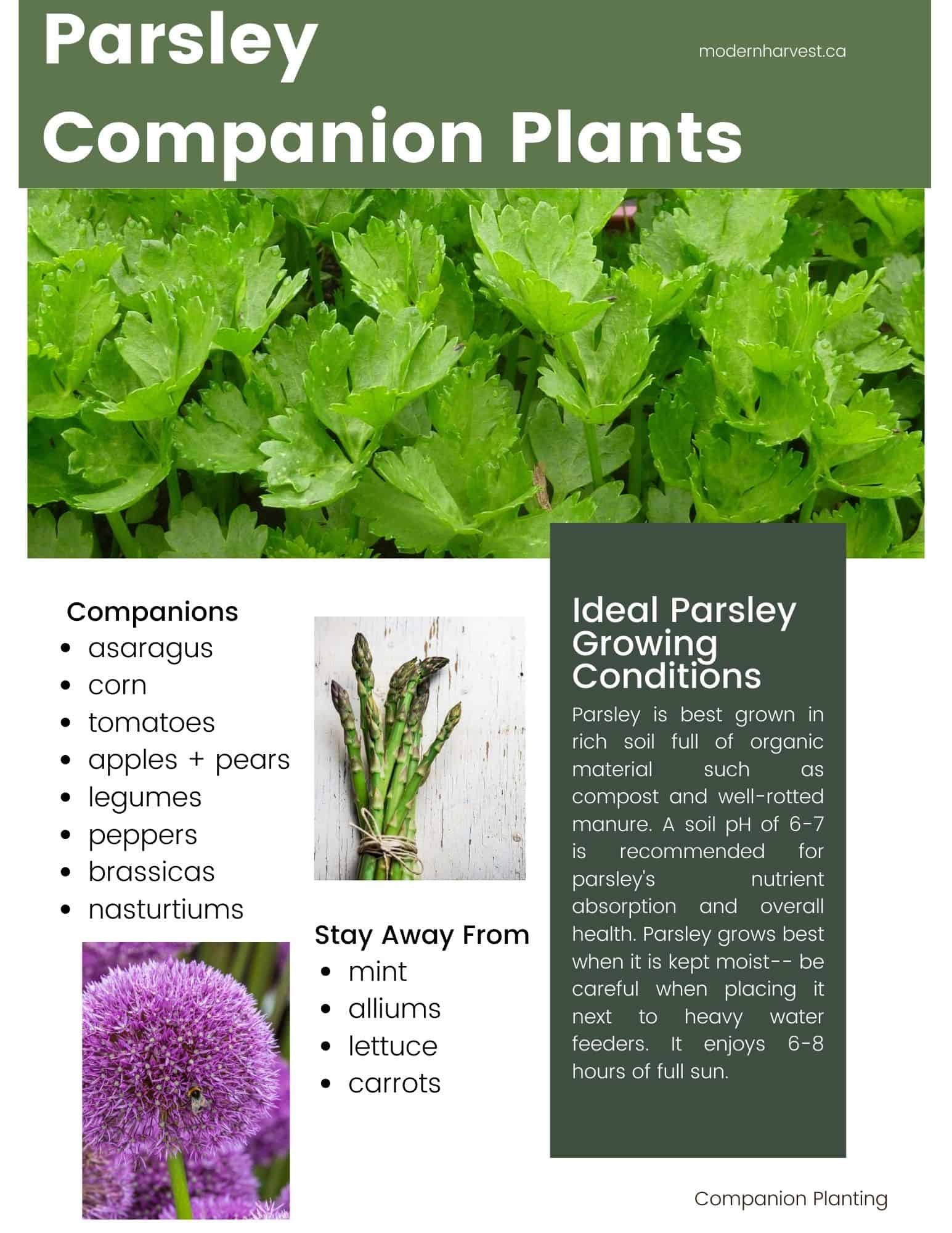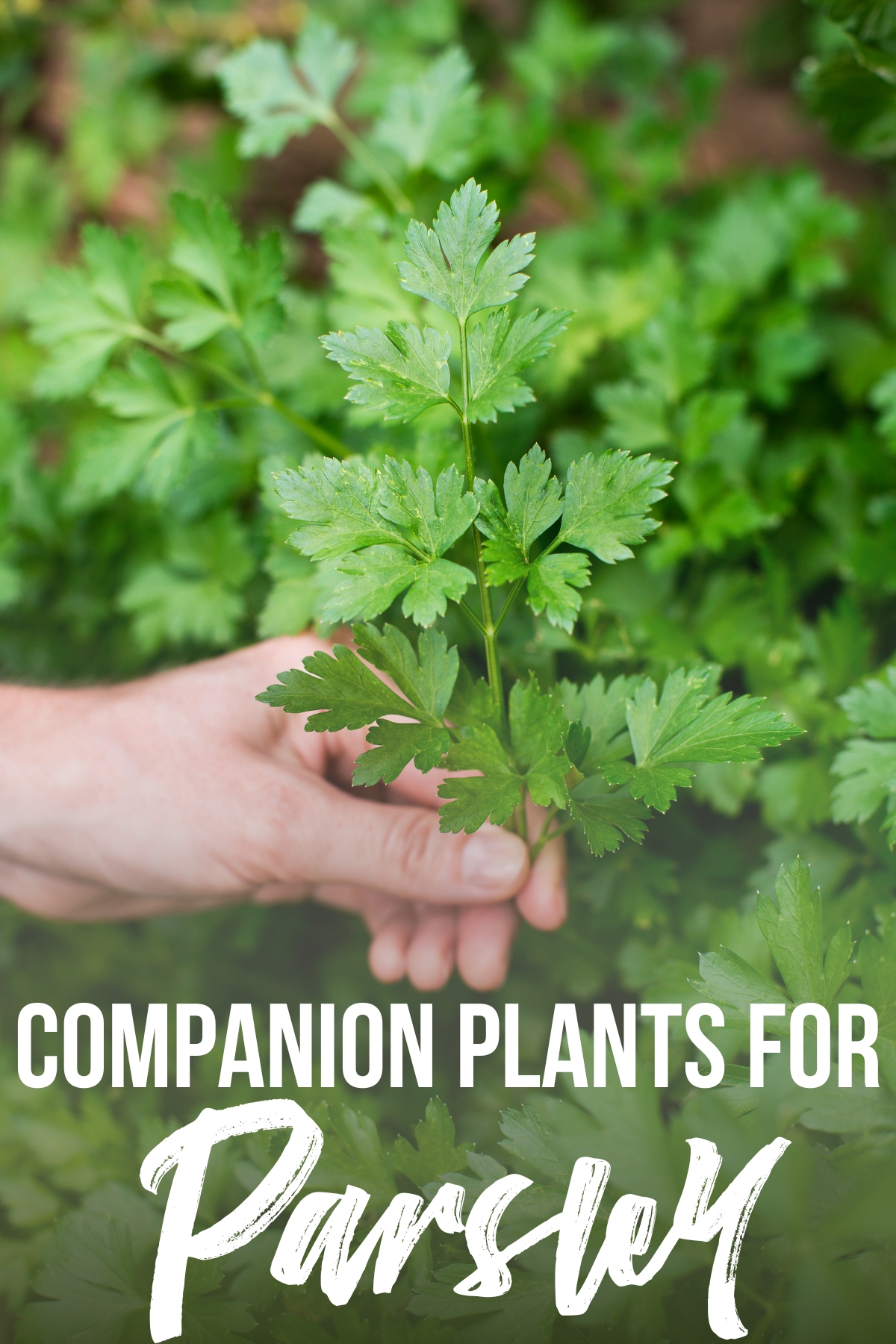Dill And Parsley: The Perfect Companion Planting Duo
Dill and parsley are two popular herbs that are often used in cooking. They are also known for their companion planting benefits, meaning that they can help to improve the growth and health of each other when planted together.
In this blog post, we will explore the benefits of companion planting dill and parsley, as well as some tips for planting them together in your garden.
Benefits of Companion Planting Dill and Parsley
There are several benefits to companion planting dill and parsley. Here are a few of the most notable:
- Attract beneficial insects. Both dill and parsley attract beneficial insects, such as ladybugs, hoverflies, and lacewings. These insects help to control pests in the garden, such as aphids, spider mites, and whiteflies.
- Improve soil health. Dill and parsley both have deep roots that help to aerate and loosen the soil. This can improve drainage and water retention, which can benefit other plants in the garden.
- Discourage pests. Dill can actually help to repel some pests, such as carrot flies and cabbage moths. Parsley can also help to deter slugs and snails.
- Enhance flavor. The flavors of dill and parsley can complement each other when cooked together. They can also be used fresh in salads or as garnishes.
Tips for Planting Dill and Parsley Together
When planting dill and parsley together, there are a few things you should keep in mind:
- Plant them in full sun. Both dill and parsley need full sun in order to thrive.
- Plant them in well-drained soil. Both dill and parsley prefer well-drained soil. If your soil is heavy clay, you may need to add some sand or compost to improve drainage.
- Space them properly. Dill and parsley can grow quite large, so you'll need to space them about 12 inches apart.
- Water them regularly. Both dill and parsley need regular watering, especially during hot, dry weather.
- Fertilize them occasionally. You can fertilize dill and parsley once a month with a balanced fertilizer.
Conclusion
Dill and parsley are two great herbs to companion plant together. They have a number of benefits, such as attracting beneficial insects, improving soil health, and discouraging pests. They are also easy to grow and care for. If you're looking for two herbs to add to your garden, dill and parsley are a great choice.
Dill and parsley are two popular herbs that are often grown together in herb gardens. However, did you know that they are not actually good companion plants? In fact, planting them too close together can actually stunt their growth and attract pests.
If you are planning to plant dill and parsley in your garden, it is best to space them out at least 12 inches apart. You should also avoid planting them near other members of the carrot family, such as carrots, fennel, and celery.
If you are looking for good companion plants for dill and parsley, there are a few options that you can consider. Onions, celery, lettuce, cucumbers, zucchini, kale, corn, and beans are all good choices. These plants will not compete with dill and parsley for nutrients or water, and they may even help to repel pests.
For more information about companion planting, I recommend visiting Gardenia Inspiration. This website has a wealth of information about which plants are good companions for each other. You can also find tips on how to design and plant your own herb garden.
FAQ of dill and parsley companion planting
1. Can parsley and dill be planted together?
Yes, parsley and dill can be planted together. In fact, they are often recommended as companion plants because they have similar growing requirements. Both plants prefer full sun and well-drained soil. They also both repel pests, such as aphids and carrot flies.
2. What are some of the benefits of planting dill and parsley together?
There are several benefits to planting dill and parsley together. First, as mentioned above, they have similar growing requirements, so they will thrive in the same conditions. Second, they both repel pests, so planting them together can help to protect your other plants. Third, dill can help to improve the flavor of parsley, and parsley can help to deter mildew from attacking dill.
3. What are some of the drawbacks of planting dill and parsley together?
There are a few potential drawbacks to planting dill and parsley together. First, dill can be a bit aggressive and may crowd out parsley. Second, dill can attract pests, such as cabbage moths, which may also attack parsley. Third, dill can cross-pollinate with other members of the Umbelliferae family, such as carrots and fennel. This can result in a poor-tasting hybrid.
4. What are some other good companion plants for dill and parsley?
In addition to each other, dill and parsley can be planted with a variety of other herbs and vegetables. Some good companion plants include:
- Basil: Basil repels mosquitoes and other insects, and it can also help to improve the flavor of dill and parsley.
- Cucumbers: Dill can help to repel cucumber beetles, and cucumbers can help to support dill's growth.
- Lettuce: Dill and lettuce both prefer full sun and well-drained soil.
- Onions: Dill and onions can help to repel each other's pests.
- Tomatoes: Dill can help to repel tomato hornworms, and tomatoes can provide support for dill's growth.
5. What are some plants that should not be planted near dill?
There are a few plants that should not be planted near dill, including:
- Carrot: Dill can cross-pollinate with carrots, resulting in a poor-tasting hybrid.
- Celery: Dill can stunt the growth of celery.
- Fennel: Dill can cross-pollinate with fennel, resulting in a poor-tasting hybrid.
- Parsnip: Dill can stunt the growth of parsnips.
- Rhubarb: Dill can attract rhubarb curculios, which can damage rhubarb plants.
Image of dill and parsley companion planting
Here are 5 images of dill and parsley companion planting from pinterest.com:
Image 1: This image shows a bed of dill and parsley plants growing side by side. The dill plants are taller and have feathery green leaves, while the parsley plants are shorter and have flat green leaves. Both plants are in full bloom, with tiny white flowers clustered at the ends of their stems.

Image 2: This image shows a dill plant growing next to a tomato plant. The dill plant is providing shade for the tomato plant, which helps to protect it from the sun's rays. The dill plant is also attracting beneficial insects, which help to control pests in the tomato plant.

Image 3: This image shows a dill plant growing next to a carrot plant. The dill plant is helping to repel carrot flies, which are a common pest of carrot plants. The dill plant is also attracting beneficial insects, which help to pollinate the carrot flowers.

Image 4: This image shows a dill plant growing next to a lettuce plant. The dill plant is helping to repel aphids, which are a common pest of lettuce plants. The dill plant is also attracting beneficial insects, which help to pollinate the lettuce flowers.

Image 5: This image shows a dill plant growing next to a cucumber plant. The dill plant is helping to repel cucumber beetles, which are a common pest of cucumber plants. The dill plant is also attracting beneficial insects, which help to pollinate the cucumber flowers.

Post a Comment for "Dill And Parsley: The Perfect Companion Planting Duo"